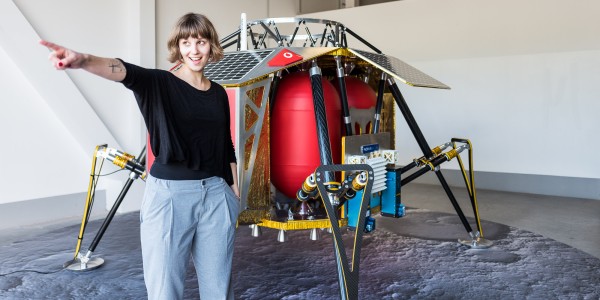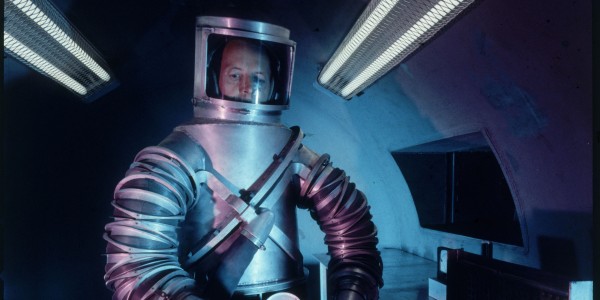On July 20th, 1969 at 10:44 p.m. EDT, Flight Director Gene Kranz gave Armstrong and Aldrin the “go” to fire the Eagle’s decent engine. At the time, Eagle was 50,000 feet above the surface and 300 miles from the planned landing site. The next 12 minutes of the final landing phase would be critical.
Almost immediately Bales saw troubling data on his console. A downrange navigation error had the flight computer believe the spacecraft was descending 20 feet per second, 14 miles per hour faster than it was actually was. The abort limit was 35 feet per second, and if the error could not be corrected, Bales would have to make the call to stop the landing. Bales said, “from that point on, I was truthfully scared to death. I was mortified.”
Bales carefully monitored the data. Then suddenly, with about six minutes before touchdown, Armstrong and Aldrin saw the numbers “1202” flash on the lunar module’s navigation computer.
"Twelve-oh-two, twelve-oh-two," called Aldrin. Armstrong, in a tense voice, added, “Give us a reading on the twelve-oh-two program alarm.”
Again and again: Alarm Code 1202
Tension filled the “trench” of the Mission Control room, filled with rows of engineers managing all aspects of the different flight systems. Despite the exhaustive training, simulations and procedures governing Apollo 11, the 1202 alarm program was not familiar to the Flight Director or the other engineers in the room.
Except for one. Steve Bales.
“It was clear in their voices that the 1202 was causing the crew serious concern,” Bales remembered. But he and his support colleague Jack Garman had remembered encountering this very alarm during their three months of simulations. It meant that the navigation computer was receiving such a high volume of computational requests that it was prioritizing the tasks. “This triggered my memory. The rule was this alarm would be ok if it did not happen too often,” he added. Garman confirmed it.
The moon landing hung in the balance, resting on Bales’ shoulders.
Steve Bales – deciding in the eye of the storm
Since the data Bales was looking at was still good, he gave a loud „GO“ to Flight Director Gene Kranz and Capsule Communicator Charlie Duke, who heard it simultaneously. He added, “Usually the CapCom waits for the Flight Director to confirm it’s ok to pass anything to the crew. Charlie sensed it was critical that Mission Control was Go on the alarm, and he didn’t wait. He told the crew instantly.”
Two minutes later, Aldrin and Armstrong received another 1202 alarm, and once again Bales had to make the call. He quickly conferred with Garman again and then gave the “Go” to proceed with the landing. The alarms were persistent. Bales said, “Forty seconds later a 1201 alarm flashed on the crew display and I responded ‘same type, we’re GO. Seconds later there was a 1202 followed shortly by another.”






